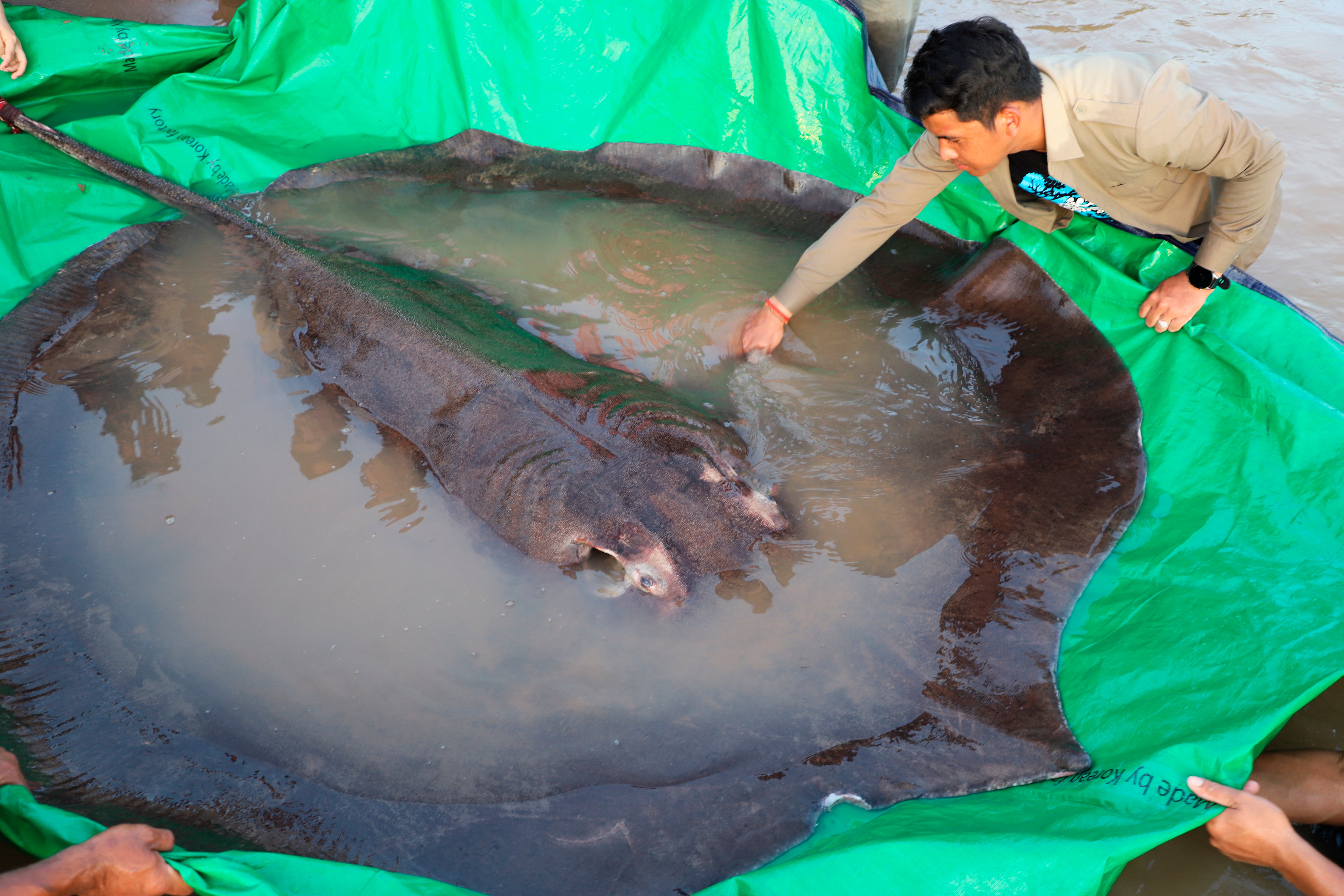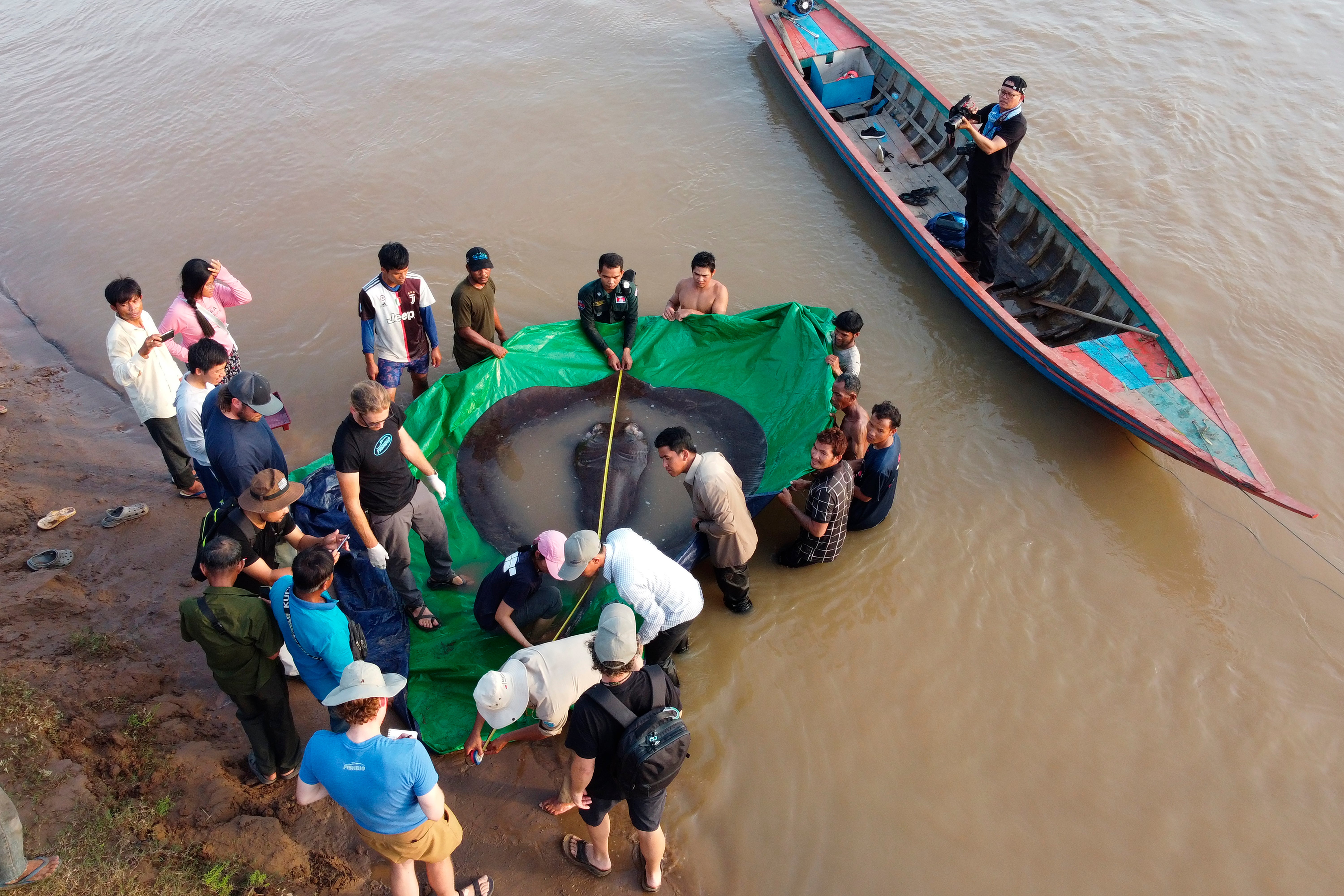Giant stingray caught in Mekong ‘biggest freshwater fish ever documented’
The fish is called “Boramy”, which means full moon in the local Khmer tongue

An colossal stingray caught in the Mekong river has been touted by scientists as the biggest freshwater fish ever documented.
The 300kg (661lb) female stingray has usurped a 646lb (293kg) giant catfish caught in Thailand in 2005 from its place as the record-holder, scientists say.
The Mekong river is the twelfth longest river in the world and the third longest in Asia, flowing from the Tibetan Plateau through China, Myanmar, Laos, Thailand, Cambodia, and Vietnam.
Its boundless biodiversity has seen the Mekong come to account for a quarter of the world’s freshwater fish catch, according to WWF. But overfishing has caused fish populations and catches to fall, threatening to inflict irreparable damage on its vulnerable ecosystem.

Zeb Hogan, a biologist who leads Wonders of the Mekong, a USAID-funded conservation project, said: “In 20 years of researching giant fish in rivers and lakes on six continents, this is the largest freshwater fish that we’ve encountered or that’s been documented anywhere worldwide.”
“Finding and documenting this fish is remarkable, and a rare positive sign of hope, even more so because it occurred in the Mekong, a river that’s currently facing many challenges,” added Dr Hogan, who is also a professor at the University of Nevada, Reno.
Wonders of the Mekong works alongside the Cambodian Fisheries Administration to establish a network of fisherman who alert the researchers if they catch giant or endangered fish.
And on 13 June, in the middle of the night, the scientists received a call from a local Koh Preah fisherman, telling them he had caught a “very big” stingray. He later took home a $600 (£490) reward for the remarkable find.
The 3.98m long and 2.2m wide fish was fitted with an acoustic tag to track its future movement, before being released back into the river.

The stingray vanished under the muddy waters of the Mekong around dusk when the moon was already up in the sky, Dr Hogan said.
The fish is called “Boramy”, which means full moon in the local Khmer tongue.
“The stingray find is evidence that the natural world can still yield new and extraordinary discoveries, and that many of the largest aquatic creatures remain woefully understudied,” Dr Hogan said.
The giant freshwater stingray is an endangered species and this discovery is the second of its kind to be examined by the team since May, the first having weighed 181kg.
“When record fish are found, it means the aquatic environment is still relatively healthy. This is in contrast to what we’ve seen in places like the Yantgze River, where scientists reported the extinction of the Chinese paddlefish,” Dr Hogan said.
“The Mekong’s deep pools sustain life far beyond these impressive giants. Spawning in this critical habitat produces billions of fish every year which ensure the food security and livelihoods for millions of people in Cambodia and Vietnam.”
Join our commenting forum
Join thought-provoking conversations, follow other Independent readers and see their replies
Comments